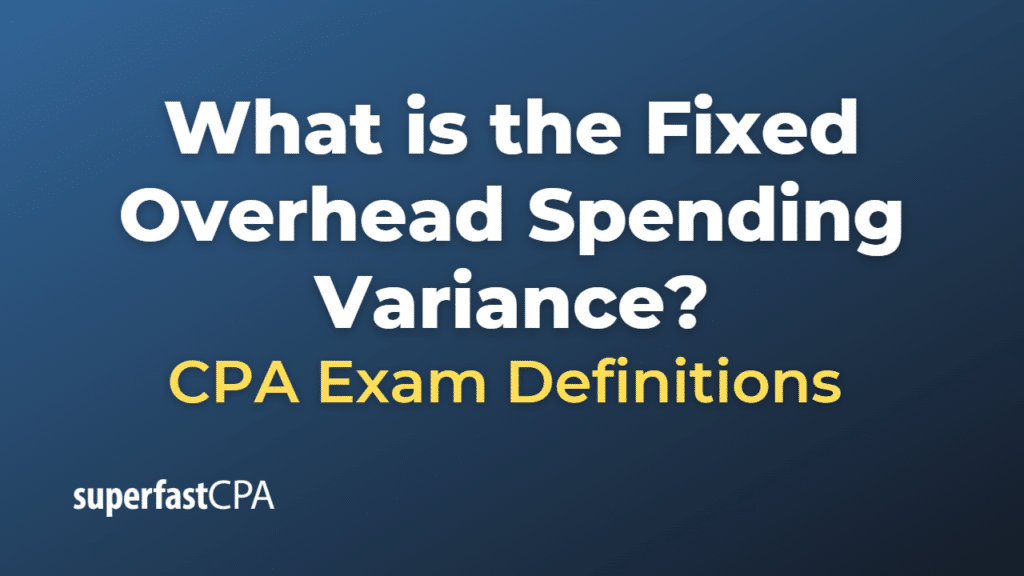Fixed Overhead Spending Variance
Fixed overhead spending variance is a management accounting metric that measures the difference between the actual fixed overhead costs incurred and the budgeted fixed overhead costs for a specific period. It’s one of the key tools managers use to control costs and monitor the company’s financial performance.
- A positive variance occurs when the actual costs are more than the budgeted costs. This is unfavorable as it means the company has spent more on fixed overhead than it planned to.
- A negative variance, on the other hand, occurs when the actual costs are less than the budgeted costs. This is favorable as it indicates the company has managed to spend less than it expected to on fixed overhead.
For example, if a company budgeted $20,000 for fixed overhead costs for the month, but actually incurred $22,000 in costs, it would have an unfavorable fixed overhead spending variance of $2,000. Conversely, if it only incurred $18,000 in costs, it would have a favorable variance of $2,000.
This variance gives managers an idea of how well the company is controlling its fixed costs. However, since fixed overhead costs are largely not controllable in the short term (e.g., rent, salaries), significant variances may need to be investigated to understand the cause and identify any potential long-term cost savings.
Example of the Fixed Overhead Spending Variance
Let’s consider a manufacturing company that has established a budget for its fixed overhead costs.
Suppose the company budgeted $50,000 per month for fixed overhead costs, which includes costs such as rent, salaries of permanent staff, insurance, and depreciation.
- Example of Unfavorable Variance: In a particular month, due to an increase in insurance premiums and unexpected maintenance costs, the company actually spent ,000 on fixed overhead costs. This would result in an unfavorable fixed overhead spending variance of $5,000 ($55,000 actual – $50,000 budgeted = $5,000 unfavorable). This is unfavorable because the company spent more than it planned to on fixed overhead costs.
- Example of Favorable Variance: In another month, perhaps the company was able to negotiate a reduction in its rent, and it only spent $45,000 on fixed overhead costs. This would result in a favorable fixed overhead spending variance of $5,000 ($45,000 actual – $50,000 budgeted = -$5,000 favorable). This is favorable because the company spent less than it planned to on fixed overhead costs.
These variances provide important feedback to the company’s managers about how well they are controlling fixed overhead costs. Significant variances should be investigated to understand the reasons behind them and identify any potential actions to improve cost control.













